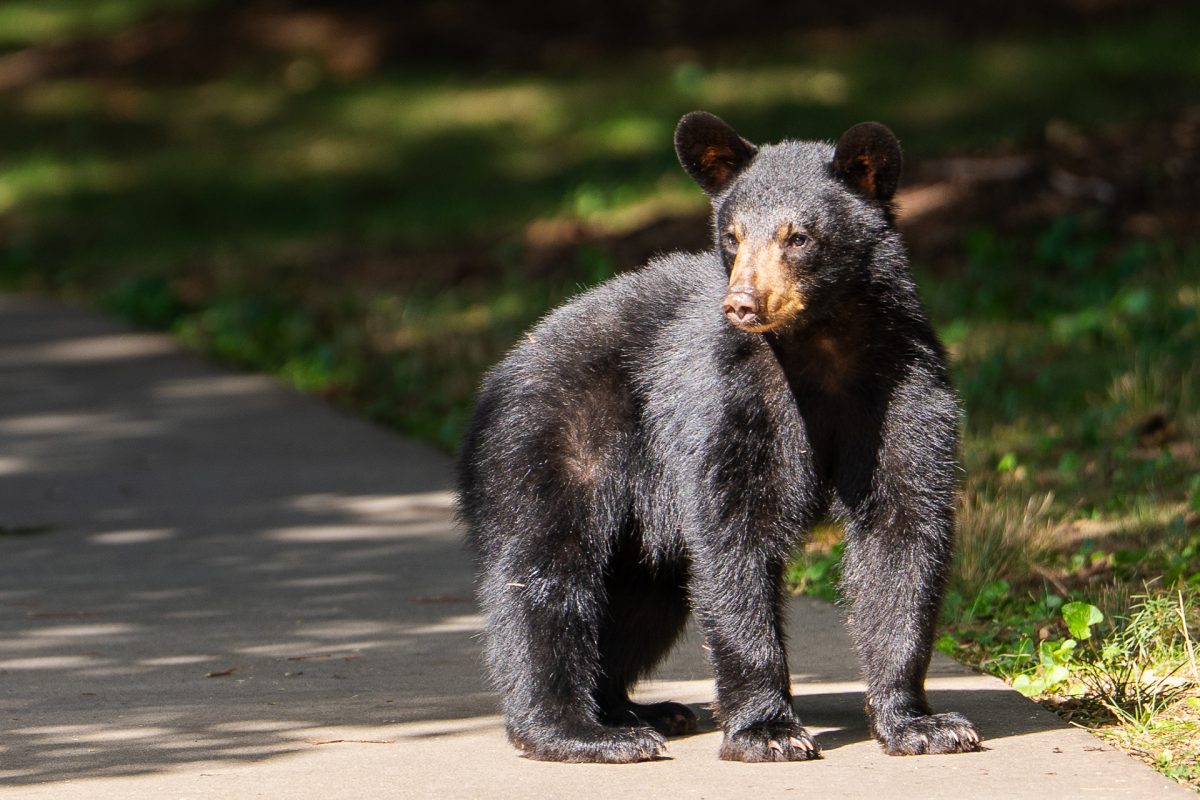Linda Cummins
Multimedia Staff
[email protected]
As the stress of exams looms over students in Ramsey Library, they can escape from their studies by traveling back to the 1940’s with a little help from an art exhibit.
Displayed in the Blowers Gallery, original posters from the Illustrated Guide to Great Smoky Mountains National Park are inspired by artists from another era.
“Our posters look old, as if they were produced generations ago,” said Joel Anderson, artist and founder of Anderson Design Group.
Anderson spent years studying the rendering techniques, typography and style of art from the 1920s, ‘30s and ‘40s.
“In an era of computerized art and photography, our culture craves artistry and craftsmanship,” Anderson said. “Students stopping to look at the art during set-up told me it was striking a chord, people of all ages are getting into it.”
One of his most successful projects has been a poster series of all 59 National Parks which inspired his best-selling 59 Illustrated National Parks coffee table book. More of his work is available on the Anderson Design Group website.
“It’s no surprise that we are decorating with yesterday’s ordinary advertising art and accepting it as historical and beautiful, a legitimate, nostalgic, emotionally-engaging art form,” Anderson said.
Research for the illustrated guide was both fun and work, said Anderson. Dan Pierce, National Endowment for the Humanities distinguished professor in history at UNCA and collabo
rator on the guide, traveled with Anderson and his son Nathan, who is a travel writer and on the design group staff. The group hiked, camped and breathed in their research during numerou
s fact and inspiration-finding explorations.
“My favorite experience was hiking with Nathan and Dan into Raven’s Fork Gorge,” Anderson said. “That’s a two mile hike uphill so you really pay for it, then another mile downhill where you find yourself in this gorge that’s completely isolated with waterfalls and giant boulders.”

Pierce said the Raven’s Fork visit was also a major highlight for him and is a magical place few people visit.
The illustrated guide calls a visit to Raven’s Fork a unique and humbling experience in a place where, in the words of the 1964 Wilderness Act, “the earth and its community of life are untrammeled by man, where man himself is a visitor who does not remain.”
Pierce said has spent a large portion of his life exploring Great Smoky Mountains National Park since moving to Asheville with his family at the age of three. Growing up, he made many memorable trips into the Smokies to hike, camp and explore. He said he has continued that tradition with his own family.
“I had the good fortune of marrying a woman from Tennessee who just loves the Smokies and our first family camping trip when our girls were small was to Smoky National Park,” Pierce said.
Pierce has studied the Smokies academically for more than 20 years and said there is something for everyone at Great Smoky Mountains National Park, much of it more accessible than Raven’s Fork Gorge.
“From the bottom of Abrams Creek to the top of Clingmans Dome, this Park is bursting with life,” Nathan wrote in the guide. “Waterfalls, wildflowers, lightening bugs, salamanders, Tulip trees, mountain farms, scenic trails, black bears, speckled trout, moonshine…now doesn’t that sound like a good time?”
On their third research trip to the Smokies, Nathan hiked the Grotto Falls with his wife and daughter, he said. The opportunity to continue the family legacy of enjoying the Parks together like he had with his father is one he will never forget, Nathan said.
The main entrance to Great Smoky Mountains National Park contains a museum, visitors center and trail heads. The Park is free to enter and a lot can be seen from the car, Pierce said.
The Cataloochee entrance is marginally closer to Asheville and contains a herd of elk which were introduced into the park in 2001. The initial herd of 25 grew to more than 150 elk.
“It’s just a gorgeous place, probably one of the best views of the Smokies and tons of great hiking trails,” Pierce said.
The best times of the day to observe elk are early in the morning or at dusk when they graze in the meadows, according to the illustrated guide.
Cataloochee also contains remnants of a life now gone, with an old school, church and barn that visitors are welcome to walk through. Although no longer used for Sunday services, today the church hosts an annual reunion which always features the singing of “Shall We Gather at the River.”
Strains of that hymn seem joined to the original purpose of the Works Progress Administration, born of the Great Depression to help unemployed artists by commissioning posters to promote the National Parks. Their artwork lives on, inspiring new works and encouraging our nation to gather at the river for generations to come.
The posters from the Illustrated Guide to Great Smoky Mountains National Park will be on display in Ramsey Library’s Blowers Gallery until Nov. 30.
Categories:
Great Smoky Mountain posters transport viewers back to ’40s
November 29, 2017
0
More to Discover






















